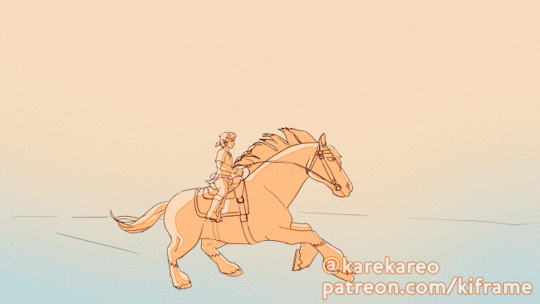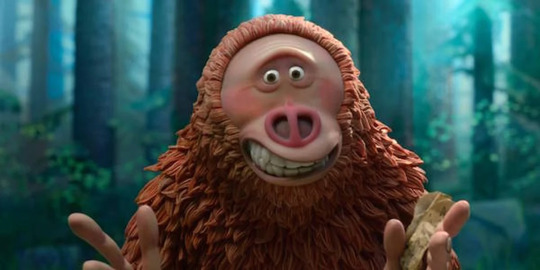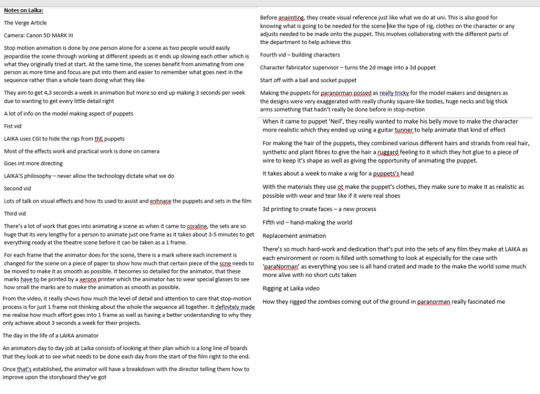#link anaimation
Explore tagged Tumblr posts
Photo
He looks so happy at the end 🥺🥺🥺

[gif] horse riding with link 🐎
#I wanna sob#he’s so pretty#and he looks so happy#botw#legend of zelda#breath of the wild#link#loz botw#loz link#fanart#loz animation#link anaimation#link fanart#loz fanart
1K notes
·
View notes
Text
Day 5 - Media Roles - Where’s my Story at? and LAIKA
Based on the presentation that we did on Wednesday, I thought I would continue my research and have a closer look at the story-telling aspect of my chosen roles in regard to my future research as well as look into how those roles operate in those companies that I have chosen to look into much closer in detail. Even though I’ve already had a good grasp of what these companies were about before our presentation, I thought I do some extensive research to the roles I’m most interested in and hopefully will make it more decisive which medium I would like to go into between 3D or Stop-Motion. Whilst I will look at this objective of story-telling, I will also take an interest in the process that these roles are done in the industry and how those elements will fall back on the theme.
Stop-Motion
For the stop-motion aspect of the project, I chose to further look into both the puppet design and puppet animation in both LAIKA and Tippet and how it might relate back to our group theme of story-telling as well as my interest in these roles.
LAIKA

As mentioned before, LAIKA is an Orgon based stop-motion company that utilises both Stop-motion animation as well as visual effects to help create their films as best as possible with the art form as before LAIKA was a thing, there hadn’t been any stop-motion companies that used visual effects as support for their films before due to saving them a lot of time. However having said that, that’s not to say that LAIKA uses visual effects to cut corners as they more so see it as a tool rather than a way of telling the story as almost everything you see in any of their films is all hand-crafted from scratch keeping true to the art form. And even if something is done through visual effects, they take inspiration from constructing a set or puppet and have that scanned into the software which the VFX team can use as a reference to implement it into the film. For the film ‘Missing Link’, they scanned physical model landscapes of an icey mountainous terrain to provide a foundation/template for the scene which was added onto the animation after the scene had been hand-animated. The reason I’m talking a lot about VFX at the moment is because of how much it interests me as whilst we don���t cover it in the course, there’s something about the technicality and it’s potential that really intrigues me as an animator/modeler in stop-motion to help make it that more special. The video below demonstrates what you can do with visual effects in a stop-motion environment as I found it to be really inspiring to watch:
Realizing the Potential for Stop Motion Animation with LAIKA's VFX team
youtube
Going back to the chosen roles I’ve chosen to look at (Animator and Puppet-Maker), LAIKA is very open to talking about how they do things for their films as there are lots of resources to interviews, demonstrations as well as articles going into the very nitty-gritty info to how it’s done. The way that LAIKA animators used to animate originally was through using two people at once to animate a scene at the same time however, this proved to be unproductive at the time as both aniamtors found it to be quite tricky to work together as they would work at different speeds as well as remenbering details that the other person might have not known, not to mention how one would have to wait for the other to finish articuling before taking a frame. Nowadays, it’s just one animator animating a scene at a time which makes things less complicated all together for the person that has to animate the scene. However this dosen’t speed up the process as it in fact actually makes the scene a lot more relaxed for the animator to animate in almost like they have their own playground to mess around in hence why it would take much longer than normal. In the video ‘One Frame of Animatioon’ below, it shows how much is moved and tweaked to achive one frame of animation in the ‘Coraline’. Because fo the video, it’s made me appreciate animating as a stop-motion animator a lot more by the amount of care and pressure that goes into the scene like it and makes it really understanding to how they achivee about 3 seconds of animation per week on a scene like this one.
LAIKA | Coraline | One Frame of Animation
youtube
Another video that I found that showed what it was like to animate as a stop-motion animator at LAIKA was an academy award featureete showing what a typical day is like as an animator. From the video, it was really intresting to see how much of what we’re already doing at university is just the same as if you were to work in a big comapnay as they take visual refrences of themeslves to get an idea of how not only the character will move, but also what kind of rig they’ll need, the clothes for the character or any adjustments need to be done to that character. All of this was really cool to see as so much of what professionals are doing in the industry is things I’m doing now which felt really inspiring with my development in anaimation as well as what I can do to be better.
Credited As: Stop Motion Animator
youtube
https://www.theverge.com/2016/8/18/12500814/laika-studios-behind-the-scenes-kubo-and-the-two-strings-video
https://nofilmschool.com/2016/01/day-life-laika-studios-animator
Having disccussed about the role of a stop-motion anaiamtor at LAIKA, I looked into the role of Puppet-Making where I learnt a lot more than I previosuly knew beforehand. An example of this is how it came to the lip sync of the puppet as the animation done at LAIKA is something called ‘Placement Animation’ which is removing pannels of the face for each of the frames to make it seem like the puppet is talking without the need of special effects for the puppet to talk their dialogue. To make these face pannels for the dialogue, they use a 3D printer to make each face plate showing the basic expressions as well as the most common mouth movements that the character is going to express. This is waht LAIKA had been doing with their faceplates orginally as they created about 20,000 for Coralaine but now with their newest film ‘Missing Link’ instead of the regular predicted faces plates, they 3D-printed every slight bit of movement of the face as it’s own plate to achive the smoothest animation possaible for every scene in the film which in total was 106,000 plates. Whislt this isn’t necessairly directly linked towards the Puppet Making Role and more so rigging, I feel it sets a president to how much dedication and care that is taken place into all the work that goes into these puppets. Not only that, it shows how each department are all problem slovers to the craft as with the case with the face plates to a Puppet Maker, they would have to make sure that the puppet is able to have their faces detached and removed from the character as simple as possiable without it interfearing with the design of the puppet or it’s clothing. In a way, both a puppet maker and a rigger for a stop-motion production have simillar roles as they both have to find ways to make the animtors jobs a whole lot easier when it comes to animating as well as making the scene looking good which has kind of open my mindset that becuase they’re so simillar, it woulden’t matter too much if you were to specilise in one role as there’s similarities in roles that you might of not relaised which your capable of doing. Because of this, I plan to look into rigging in stop-motion as well as looking at it further in a CG envoirment.
Going back to the Model-making and Puppet-making, I watched these videos below going through how LAIKA created their puppets for both ‘Paranorman’ and ‘Kubo and the Two Strings’ which I mostly knew about beforehand (since I’m a really big fan of their work) but there were a couple of techniques that I was unaware of like how they constructed the hair and texture of their puppets. With characters like ‘Monkey’ from ‘Kubo and the two strings’, they were trying to figure out how to create realastic hair onto the puppet that would fit into the art style as well as being able to animate at the same time. The soloution to this was to combine silicon and wire together to give it a short and soft looking texture as well as being posable at the same time. Despite being very strenous to attach all the different pieces of silcon hair upon the puppet (as well as spares in case any break), the pay off is worth it in the end as it presents a really rugged but animal-like character as well as being easy for the animators to move as well due to the material being soft but retaining it’s shape. I like this development a lot as it further shows their problem-solving skills as a puppet maker and how this dicovery was used in the next film ‘Missing Link’ to create Susan’s furry body.
Monkey - Kubo and the Two Strings

Susan - Missing Link

In the video below, it shows the challenges and process of creating the characters in ‘Paranorman’ as it was such a large step up compared to what the puppet makers did for ‘Coraline’ due to how exgagerated the character designs were. Becuase of this, the puppet makers experimented a lot with creating the puppets as for the character ‘Niel’, they wanted to find a way to animate his belly in addtion to his body giving a lot more personality to the character. This is where they experiment using a guitar tunning device to allow them to adjust how far out and in the belly is animated. This to me was really cool to see by using stuff lying around to solve a problem almost like what Phill Tippet does from collecting a bunch of random materils along his life which he feels will be proved useful later. One of the biggest challenges was both creating the larger scale models that were very square in their body or the creation of the hair for every character. The larger character designs were tricky at first due to their enormous size and becuase they were so dense, they would often topple over unless a rig was attached to it which even still made the puppets collapse. Fortunatly, the way they got around this problem was through making the materials lighter to allow the wider puppets to have more freedom in the air as well as still showing their weight in their performance.
For the hair of the characters, they use a combination of real and synthetic hair and also plant fibre’s to make a ruggard but relastic look to the hair as with ‘Niel’s’ hair, they take a couple of orange hair, plant strands and wire and then curl it up into a ball which is then super glueed onto the the characters head creating one chucnk of curly hiar for the character. Like with the silcon texture on ‘Monkey’, this allows the hair to keep it’s shape. For ‘Norman’s’ hair, it worked a little differently as they use goat hair hair and wire together which was then dyed with brown hair dye to create his look. However because his hair was going to be a lot more animated compared to the rest of the characters in the film, they had to maticiously fill in each strand of ‘Norman’s’ head in which the porcess usually takes a week for them to do for one puppet since there’s so many hairs hiding in Norman’s head. Whislt this also sounds really tedious, it makes it all the better seeing it in action which is mainly why I’ve been intrested in the puppet-making role as no matter how small the detail is, it’s so satasifying to see all the parts flow together to complete the character.
One last bit to mention that I really liked in the video was their disscusion on costume design as it referred back to our group theme of story-telling in anaimation as the costume designers would deliberately make Norman’s clothes worn and ragged to show how much he’s used those choes for walking. Whislt this is so minor to see and talk about, I feel it all adds up in the end of expressign the type of character Norman is portrayed in the film as a shy and distant child at the begining of the film and fits into the undead aesthetic.
LAIKA | ParaNorman | Building Characters
youtube
LAIKA | Kubo and the Two Strings | Crafting an Epic https://www.youtube.com/watch?v=Y5DFV_FkOb4
The very final thing that I researched on about LAIKA for this lengthy blog post was this video going through how the characters are rigged in ‘ParaNorman’ and how some of the scenes were made using rigs. One of the rigs that really intrestred me was the zombies scene where thye burst out of their graves from the ground. I found it to be really fascinating by how wire is cleverly hidden away in some of the broken debries as well as the use of using multiple different rigging wires like the use of a back rig for the zombie as he’s crawling out of the ground and another rig in front of him that are the little droplets of spit and not that the zombies give off when they’re moaning out loud. One of my favourite pieces of rigging they used in the scnene were these floor tiles where there are holes made up of plasticine in them as they’re meant to repersent the zombies clawing their way out of the grave and leaving these nasty marks behind. Whislt stop-motion rigging wasn’t one of my chosen roles to look at for the project, I might plan to futher research into it as I really enjoyed how the rigging process operates and how it has some simillarities to both puppet making and also animating as well if I was to pursue with stop-motion even further.
LAIKA | ParaNorman | Rigging the Game
youtube
To conclude, I’m really happy with the extensive research I’ve done on LAIKA as I feel I’ve got a good grasp to how the company operates and functions together to create their jaw-dropping and beautiful stop-motion films. Whilst there were some areas I could of talked a bit further into, I feel like I may of done a bit too much research for one day meaning I may return back to LAIKA if there’s anything specfic that needs looking at again. However, it was really reassuring to see the way they function was really simillar to how we are learning at university as I feel a lot more confident with the ondsutry than I was before. On a final note, one of the reasons I love LAIKA so much is that they always deterimed to overcome any obstacle that’s thrown their way as their philsophy is ‘Never allow the technology dictate what we do’ which is something I would want to stand by when it comes to my work too.
Extra Sources and Media:
https://www.theverge.com/2016/8/18/12500814/laika-studios-behind-the-scenes-kubo-and-the-two-strings-video
https://www.wired.com/2014/09/travis-knight-stop-motion-boxtrolls/
https://www.screendaily.com/features/how-laika-made-ambitious-stop-motion-animation-missing-link/5145578.article
https://www.youtube.com/watch?v=R4AVJvafgNo
https://www.youtube.com/watch?v=Y5DFV_FkOb4
https://www.youtube.com/watch?v=plXmbLAUTRg
Notes I did when researching:

0 notes